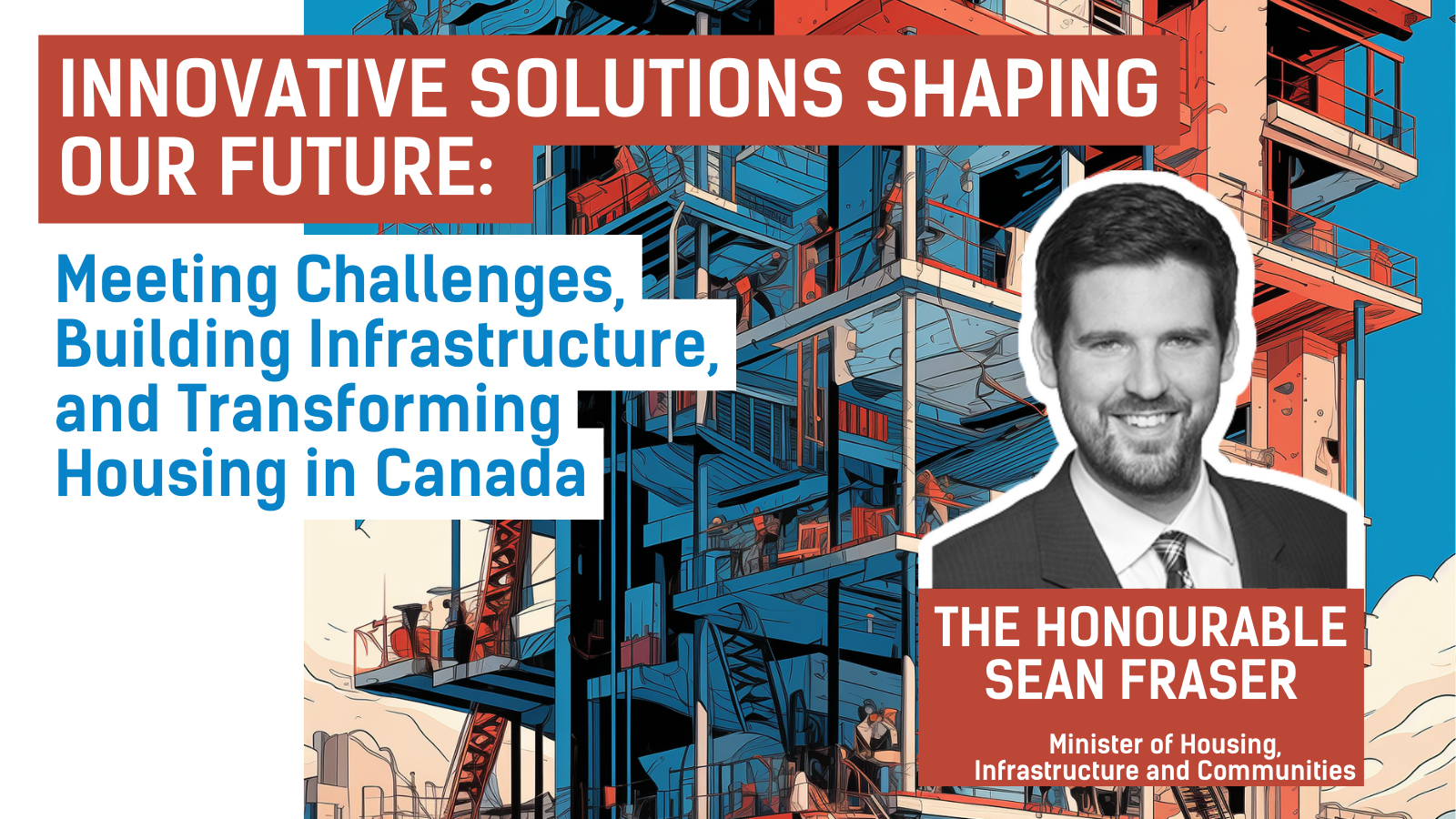Innovative Solutions Shaping Our Future: Meeting Challenges, Building Infrastructure, and Transforming Housing in Canada

Author(s):
The Honourable Sean Fraser
Minister of Housing, Infrastructure and Communities
Disclaimer: The French version of this editorial has been auto-translated and has not been approved by the author.
From climate change to the rise of disinformation to the advent of artificial intelligence to a shift in global alliances, there is no doubt that we are living in a rapidly changing world. How we take on these challenges will define what the world will look like for generations to come. This is the time to think big and be bold.
To address the challenges we face we need innovative solutions and my department is well aware of this and knows that when we put all hands on deck and leverage local minds and expertise – from all levels of government and every sector of the economy – we can go further to help build the infrastructure that makes a real difference in the lives of Canadians, now and into the future.
I want to mention some of the examples in which we are supporting this innovation and are encouraging people to put forward brilliant ideas that can make a real difference for all.
In 2021, our government announced the Natural Infrastructure Fund, asking communities to advance innovative, natural solutions that could make them more resilient to the impacts of climate change. This followed the Smart Cities Challenge, which encouraged communities of all sizes, from across the country, to use innovation, connected technology, and data to improve the lives of their residents, while also ensuring privacy of personal information and data.
The Fund has been instrumental in bringing innovative solutions to life. One example is Vancouver’s Rain City Strategy, which aims to capture and clean 90 per cent of the city’s average annual rainfall and help manage rainwater runoff from 400,000 square meters of drainage area.
We also established the Canada Infrastructure Bank in 2017, recognizing the huge role that the private sector can play in getting more infrastructure built that Canadians need. Some projects the Bank is supporting include Montreal’s Réseau express métropolitain light rail, a decarbonization partnership with Enwave District Energy, and a collaboration with Manitoba Fibre to install 2,550km of fiber-optic cabling and connect up to 49,000 underserved households.
Investments like these help public dollars go further by supporting revenue-generating projects in vital sectors such as public transit, green infrastructure, trade, transport, broadband, and clean power. They also grow ties between the public and private sectors and encourage an influx of ideas to meet growing needs and opportunities.
As the federal minister responsible for housing, it should come as no surprise to you when I say innovation will play a key part in changing how we build homes in Canada.
We don’t build cars the way we did over a century ago. We’re more efficient. We build them in factories now and clearly we need to be looking at innovative ways to build housing more productively by investing in factory-built homes and by embracing technologies including: modular housing, including panelization, including mass timber, including 3D printing.
This is why we committed $300 million through the Housing Supply Challenge and invited all to propose solutions to the barriers impeding new housing supply.
The Challenge has already resulted in teams across the country creating tools and technologies that make it easier for people to build housing.
Right now, as a result of the Housing Supply Challenge, companies, not-for-profit organizations, and more are exploring faster and cheaper ways to build accessory dwelling units, new and more sustainable modular housing building techniques, and easier and more efficient ways to support new community-led housing projects.
This fall, we launched the fifth round of the Challenge, which is a $65 million fund to increase the productive capacity of Canada’s housing sector by increasing the adoption of different innovations. This is going to change how we deliver housing, permanently.
These are just some of the ways we are currently fostering innovation to meet some of the great challenges of our time. There is more to do, and we’re up to the task. This is an all hands on deck moment, and one we will meet head on.

